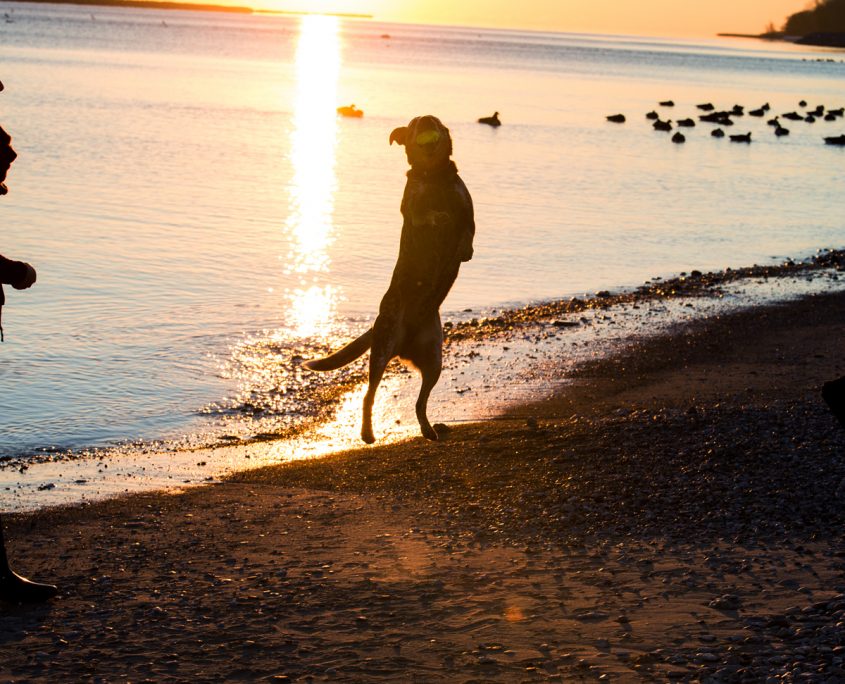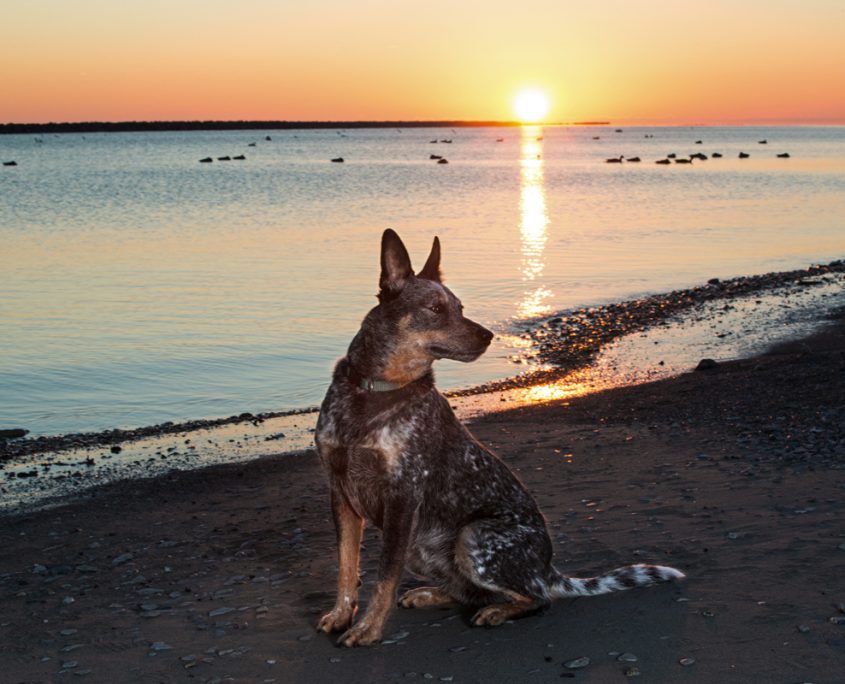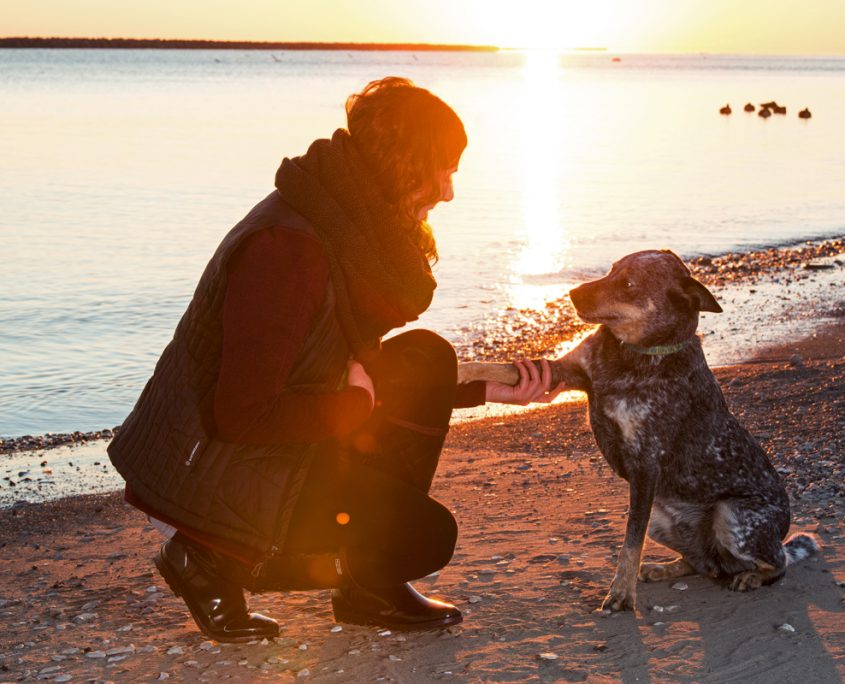Australian Cattle Dogs: The Dogs From a Land Down Under
By PAMELA STACE, Freelancer
Long ago, when settlers in the Australian Outback started ranching and farming, they found that the dogs they had brought from Britain just didn’t have the stamina that their new environment required. They needed dogs that could withstand temperature and precipitation extremes, rugged terrain and long working hours. They needed dogs that could protect property and herd livestock, as well as become a great companion – the total package! This was the beginning of the Australian Cattle Dog or the ACD.
In the mid nineteenth century, a man in Queensland bred a Dingo, the native canid of Australia, with a Collie type dog. The result was a very sturdy dog, perfectly suited for the Outback. This new type of dog proved to be a very hard worker, an excellent herder and hugely important to the emerging Australian beef industry. In 1980, the American Kennel Club recognized Australian Cattle Dogs as a breed and part of the Herding Group.
Protective & Cautious
Drovers in Australia were independent contractors hired by ranchers to get their cattle to market. ACDs guarded humans, their belongings and the cattle along that way. They had to stand their ground against strangers and would-be robbers and rustlers, or they would be gone, essentially left for dead. Today, ACDs are understandably a bit cautious towards strangers but are not necessarily skittish. Cattle dogs are still friendly and very protective of their human families. They can be stubborn, yet are also highly trustworthy, both essential qualities for taking care of the herd!
Obedient & Loyal
Because ACDs keep their herds in line by assertively nipping at their heels, they have a natural propensity for biting so training is a necessity. But due to their exceptional level of intelligence, they take to it very well if done with sensitivity and respect.
Energetic & Brave
ACDs are excellent problem solvers that do not tire easily. They are fast, agile and like a good challenge. They know how to move and control cattle in open and confined spaces. And they have the ability and drive to get back up on their feet and get back to work even if the cattle kick them!
Home Life
According to Stephanie Govin-Matzat who owns and breeds ACDs, they are very adaptable and do well in either a high energy or a more laid back environment. If you establish yourself as “top dog”, they will follow your lead. They are very loyal and are dedicated to their humans. ACDs are good with kids, although sometimes they will try to herd them!
Coat & Grooming
ACDs have a double coat and are amazingly soft to the touch. The outer coat is dense, straight and lies flat. This works like a raincoat and makes them pretty water resistant. The undercoat is shed seasonally. ACDs are born all white but in adulthood are either blue or red with tan on their legs. They can be mottled, speckled or masked, but should not have solid colored spots on their bodies. Grooming is minimal. An occasional bath, brushing (which they really enjoy) and nail trimming is all that is needed.
Health
ACDs are generally healthy, although deafness, probably color related, can be present. The Australian Cattle Dog Club of America is working with other breed clubs to fund research to locate the genetic basis for this. Progressive Retinal Atrophy, which is similar to Retinitis Pigmentosa in humans, may also affect ACDs. Responsible breeders have the hearing tested on puppies and genetically test parents before they are bred. Breeders are making rapid progress in eliminating these health issues.
Activities
Not surprisingly, Australian Cattle Dogs enjoy lots of working and leisure-time activities. They are valuable and efficient workers on farms and ranches but also participate in performance events such as agility, obedience, conformation, herding, rally and tracking. Stephanie has witnessed show cattle at the Minnesota State Fair “stacked” by an Australian Cattle Dog, who “directed” each hoof into place! ACDs are also occasionally used in search and recovery, as cadaver dogs and as therapy dogs.
Physically Tough, Emotionally Soft
The AKC refers to ACDs as “alert, curious and pleasant”. Stephanie says they are “physically tough but emotionally soft.” So regardless of the characteristics one chooses to highlight, it is clear that the Australian Cattle Dog is a unique and remarkably gifted breed that can fit in almost anywhere!
Homeland: Australia
Size:
Males 18-20”, approx. 43-45 lbs.
Females 17-19”, approx. 41-51 lbs.
Appearance:
Athletic, agile, graceful, muscular & compact.
Job: Herding cattle.
Temperament:
Highly intelligent, highly energetic yet adaptable, strong, protective, loyal, courageous & loving.
Grooming:
Occasional bathing, brushing & nail trimming.






